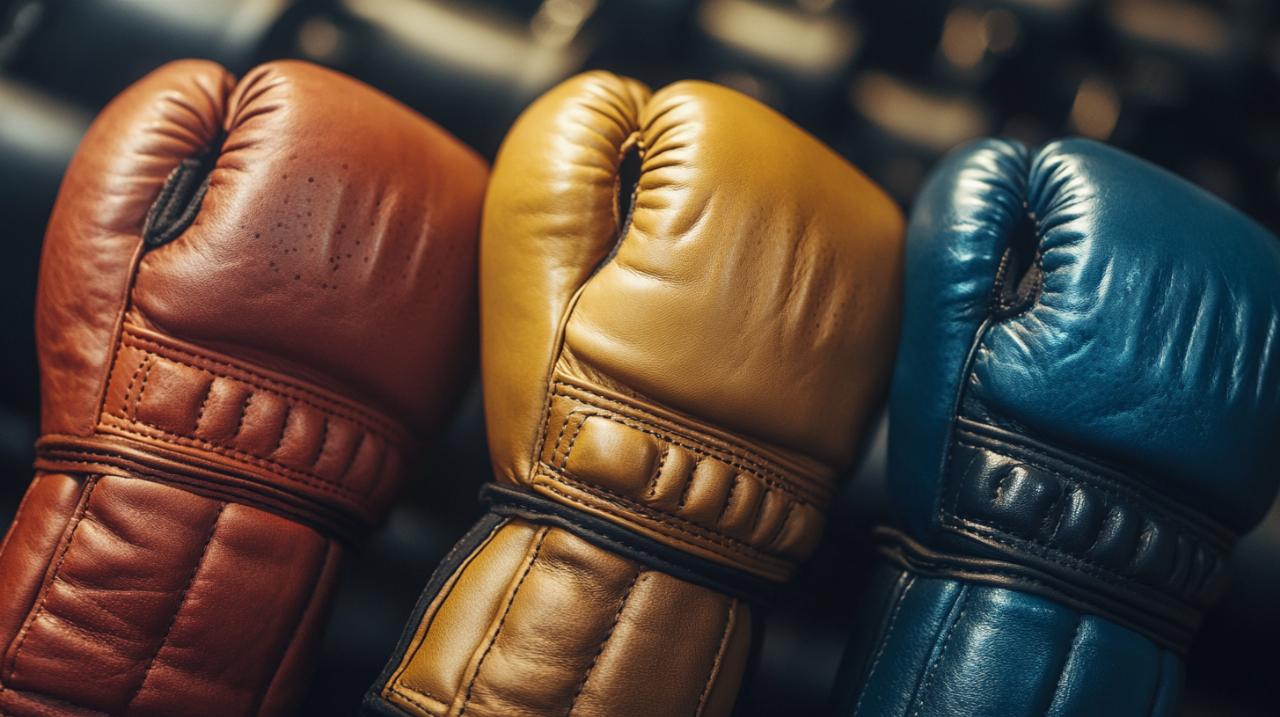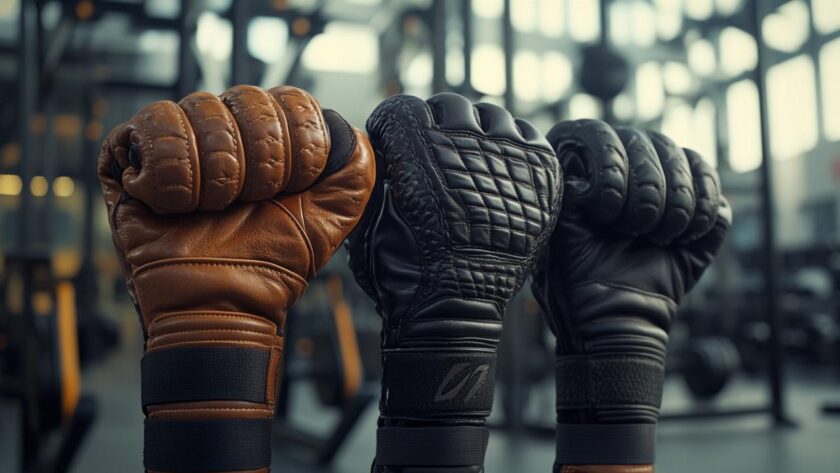When it comes to lifting weights regularly at the gym, one quickly discovers that proper equipment can make all the difference in both comfort and performance. Amongst the various accessories available, gloves designed specifically for weightlifting have become a staple for many fitness enthusiasts. The market offers a variety of materials, from traditional leather to modern neoprene and innovative gel protection systems, each promising unique benefits. Understanding the distinctions between these options is essential for anyone seeking to enhance their training sessions whilst safeguarding their hands from the wear and tear that comes with gripping barbells and dumbbells repeatedly.
Understanding the Three Main Types of Weightlifting Gloves
The world of gym gloves can initially seem quite straightforward, yet a closer examination reveals a fascinating range of materials tailored to different training needs and personal preferences. The three dominant categories are leather, neoprene and synthetic fabrics, and gel-padded variants, each bringing its own set of characteristics to the table. Leather gloves have long been the gold standard in the fitness community, prized for their natural durability and ability to conform to the unique shape of one's hand over time. Meanwhile, neoprene and other synthetic materials have gained popularity for their ease of maintenance and quick-drying properties, making them particularly appealing for those who train frequently and require minimal fuss. Gel padding, often integrated into synthetic glove designs, represents a more recent innovation aimed at absorbing impact and distributing pressure evenly across the palm, thus offering enhanced comfort during high-intensity movements such as pull-ups and rowing exercises.
Leather gloves: traditional durability and natural grip
Leather has been the material of choice for weightlifting gloves for decades, and for good reason. Its natural properties lend themselves beautifully to the demands of heavy lifting, providing a robust surface that withstands the rigours of daily use whilst developing a personalised fit as the material moulds to the contours of the wearer's hand. This adaptability means that, with proper care, leather gloves can last well over two years, making them a sound investment for serious gym-goers. The tactile feedback offered by leather is another significant advantage, as it allows lifters to maintain a strong connection with the barbell or dumbbell, which is crucial for executing complex movements with precision. Moreover, leather's inherent breathability helps to mitigate moisture build-up, although it does require regular maintenance to prevent drying and cracking. Those who opt for leather gloves often appreciate the classic aesthetic and the sense of tradition that comes with this time-honoured material, even if it demands a bit more attention in terms of cleaning and conditioning compared to synthetic alternatives.
Neoprene and Gel Options: Modern Alternatives for Comfort
Neoprene and other synthetic fabrics have emerged as compelling alternatives to leather, particularly for individuals who value convenience and rapid drying times. Neoprene stands out for its exceptional flexibility and resilience, making it a favourite amongst those who engage in dynamic, high-repetition training sessions. Microfibre variants, on the other hand, excel in breathability, ensuring that hands remain cool and dry even during the most gruelling workouts. Polyurethane-based gloves offer an affordable entry point for beginners, though they may not boast the same longevity as their leather counterparts. What truly sets many modern gloves apart, however, is the incorporation of gel padding. This technology works by absorbing the shock of impact and spreading pressure evenly across the palm, which can be particularly beneficial during exercises that place sustained stress on the hands. Whilst gel padding tends to offer superior cushioning compared to traditional foam, the latter remains a viable choice for those primarily focused on machine-based exercises and lighter weights. The best weightlifting glove option ultimately depends on one's training style and priorities, with gel-enhanced designs providing a middle ground between protection and bar feel.
Comparing protection, grip, and performance across materials

Selecting the right gloves involves weighing several factors, including the level of protection required, the quality of grip they provide, and how they influence overall performance during various exercises. Each material brings distinct advantages and potential drawbacks, and understanding these nuances is key to making an informed decision. For instance, whilst leather excels in durability and natural grip, it may require special care to maintain its properties. Synthetic options, though easier to clean and faster to dry, might not offer the same tactile connection to the bar that seasoned lifters crave. Gel padding, meanwhile, enhances comfort but can sometimes reduce the sensitivity needed for intricate lifts. By examining these aspects in detail, one can better determine which glove type aligns with their individual training goals and hand protection needs.
Which material offers superior hand protection during heavy lifts?
When it comes to shielding the hands from the stresses of heavy lifting, the choice of material plays a pivotal role. Leather gloves, with their thick and resilient structure, provide robust protection against calluses and blisters, which are common complaints amongst those who lift substantial weights regularly. The material's ability to distribute pressure across a broader surface area means that vulnerable spots on the palm are less likely to suffer from concentrated stress. However, leather does have its limitations; it can become slippery when moist, and without proper conditioning, it may crack over time, compromising its protective qualities. Synthetic gloves with gel padding offer a different approach to protection. The gel inserts are specifically designed to absorb impact, making them highly effective for exercises that involve repetitive gripping motions or high-impact movements. This can be particularly advantageous for functional fitness enthusiasts who perform pull-ups, rowing, and similar exercises that place constant strain on the hands. Foam padding, whilst more economical, tends to compact with regular use, which can diminish its protective capacity over time. For those engaging in heavy powerlifting or strength training, gloves that incorporate wrist straps provide an additional layer of support, reducing the risk of injury by stabilising the wrist joint during maximum effort lifts.
Evaluating Grip Strength and Barbell Control for Different Glove Types
Grip strength and the ability to control the barbell are paramount considerations for anyone serious about weightlifting. Leather gloves, thanks to their textured surface and natural adhesion, often deliver an exceptional grip that many lifters find reassuring during both pressing and pulling movements. The material's capacity to adapt to the shape of the hand over time further enhances this grip, creating a secure interface between the lifter and the equipment. However, some argue that leather can reduce the direct feedback from the bar, which is why certain athletes, particularly powerlifters, prefer minimal padding or even no gloves at all, opting instead for chalk to maximise tactile connection. Synthetic gloves, especially those featuring rubberised or silicone-enhanced palms, provide an excellent alternative for those seeking a reliable grip without the maintenance demands of leather. These textured surfaces are engineered to prevent slippage, even when hands become sweaty, which is a common scenario during intense training sessions. Neoprene, in particular, offers a good balance of flexibility and grip, making it a popular choice for high-repetition workouts where maintaining a firm hold on the bar is essential. Gel-padded gloves, whilst prioritising comfort, can sometimes introduce a slight buffer that diminishes the direct feel of the bar. This trade-off means that lifters must decide whether they value enhanced cushioning or the immediate sensory input that comes from a thinner glove. Ultimately, the best choice depends on one's training style, with those performing complex, technical lifts potentially favouring a more minimalist design, whereas individuals focused on volume and endurance might appreciate the added comfort that gel or foam padding provides.




